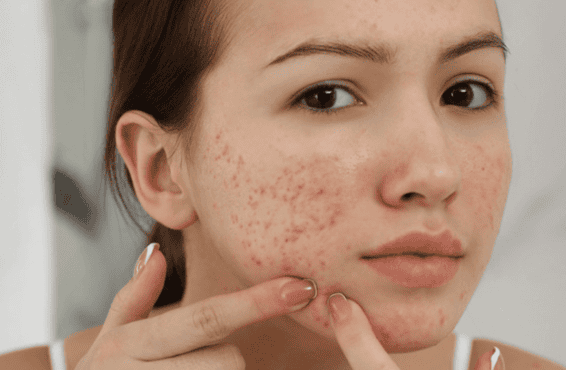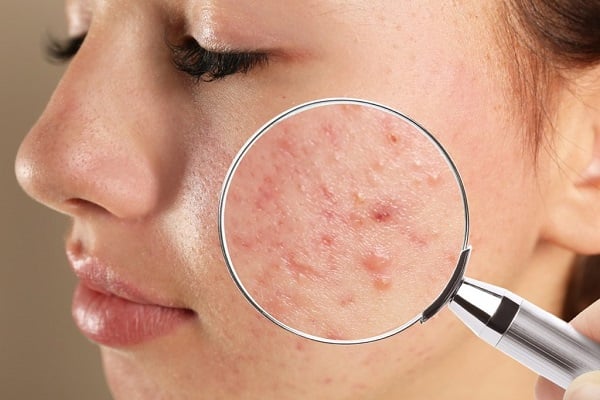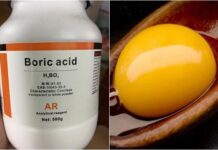Subclinical acne is one of the most persistent and bothersome skin conditions. It is usually painless and less inflammatory, but it can make the skin’s surface rough and less smooth. In fact, subclinical acne can appear in various skin areas, and each location has its own causes. Only by understanding its nature can we find suitable solutions for genuine skin improvement.
Subclinical acne in oily skin – clogged pores
In the T-zone areas such as the forehead, nose, and chin, where sebaceous glands are most active, subclinical acne often appears dense. The main cause is excess oil, dirt, and makeup residue clogging pores. To address this, an enhanced cleansing routine is necessary: proper makeup removal, facial cleansing, periodic clay masks, and the incorporation of BHA to unclog pores. When applying makeup, opt for a thin, breathable base to prevent “skin suffocation.”

Subclinical acne in dry skin – a consequence of keratinization
Many believe that dry skin is less prone to acne, but in reality, after the age of 30, poor exfoliation and dehydration can lead to clogged pores and subclinical acne. In this case, AHA becomes a suitable solution, aiding in both exfoliation and skin regeneration. Regular renewal of the stratum corneum results in brighter, smoother, and more even-toned skin.
Subclinical acne near the hairline – linked to the scalp
Some individuals experience subclinical acne along the forehead, close to the hairline, accompanied by dandruff and itchy scalp. This is often a sign of seborrheic dermatitis. An effective solution lies in changing hair care products, favoring shampoos containing Ketoconazole or Selenium Sulfide. When shampooing, let the product sit for a few minutes to take effect, then moisturize the skin with a lightweight lotion to prevent clogging. This approach significantly improves acne along the forehead.
Persistent subclinical acne despite acid use – internal causes
There are phases when, despite using various acids like BHA and AHA, subclinical acne persists. This indicates that the root cause lies in hormonal imbalances, lifestyle factors, or both. Instead of experimenting with more cosmetics, it is wiser to consult a dermatologist and pay attention to your daily habits: ensure adequate sleep, engage in light exercises to promote sweating, limit prolonged exposure to air conditioning, and simplify your skincare routine. These adjustments enable the skin to recover more robustly than solely relying on topical treatments.

Tiny subclinical acne, rough skin texture – when skin needs rest
Another form of subclinical acne is typically visible only in oblique light, resulting in a less smooth appearance without significant aesthetic impact. The cause is sensitive skin that is easily irritated by new ingredients. Instead of increasing acid concentrations, the sensible solution is to let your skin rest. Achieve this by maintaining a stable sleep schedule and refraining from using intensive treatments. This natural recovery process will help your skin regain its inherent smoothness.

































